Best beginner cameras 2024: Models from Canon, Sony, Nikon and more
The best beginner cameras must be easy to use while also offering room to grow — here are our favorites.
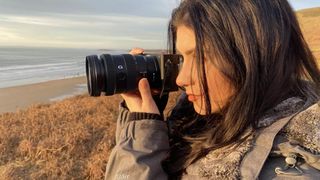
1. The list in brief ↴
2. Best overall
3. Best for content creators
4. Best for travel
5. Best mid-range model
6. Best for versatility
7. Best Micro Four Thirds camera
8. Best for autofocus and tracking
9. Best for simplicity
10. Best for portability
11. A good option for content creators
13. Best beginner camera FAQs
14. How we test
Having one of the best beginner cameras is very important if you're looking to take up photography as a hobby. Whether you want to take beautiful landscape shots, take up astrophotography, or simply capture some great photographs of the family, having a capable camera can make all the difference.
Our list of the best beginner cameras includes our picks of the best cameras for newcomers, including models from the leading brands such as Sony, Canon and Nikon. In coming up with our list, we've considered which cameras are easy to use, what features they have, and how well they scale to your abilities as you become more proficient.
We have also considered different price points when choosing the best beginner cameras. While none of the entries on this list should break the bank, others are more budget-friendly, suiting all different budgets.
Since this is a list aimed at beginners, you won't find any overly complex technical jargon here. We've taken all the guesswork out of figuring out what camera will be the best for you by providing clear and straightforward descriptions about each camera.
Our expert reviewers are photographers themselves and have used their expertise to put these models through their paces, carefully considering their accessibility for entry-level photographers. We've also chosen models that sit across a range of budgets, with many of our chosen beginner cameras coming in at the more affordable end of the scale. We recommend you keep an eye on our regularly updated camera deals page if it's a bargain you're after.
If you're not a beginner, we have plenty more camera and photography buying guides worth checking out, including the best cameras of the year. If you need other photography gear to go alongside your camera, we've covered the best tripods, travel tripods, and camera backpacks, among many others.
The quick list
Below we've summarised our top picks of the best beginner cameras available, including their main characteristics. If you want more in-depth information on a particular camera, click the links to read more.

Best overall
The Nikon Z fc combines throwback styling with modern mirrorless camera technology in a neat APS-C package that we rate highly.
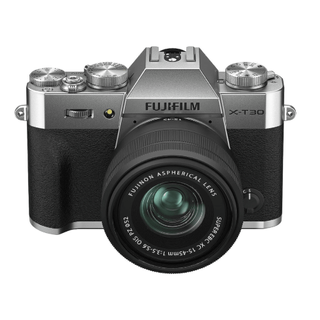
Best for content creators
The Fujifilm X-T30 II is a stylish, affordable and simple-to-use mirrorless camera that can help to produce color-rich images.
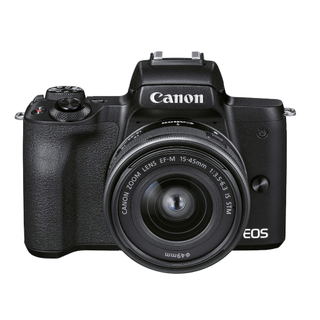
Best for travel
The Canon EOS M50 Mark II is a great option if you're looking for a stylish travel-friendly camera that takes detailed photos.
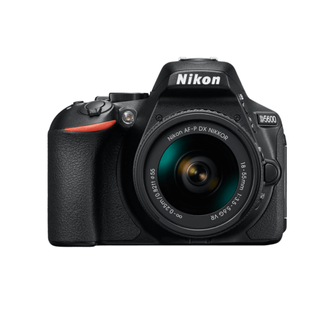
Best mid-range model
For a beginner or enthusiast photographer looking to take their image-making a step on from a compact or bridge model, the Nikon D5600 is still to this day one of best out there.
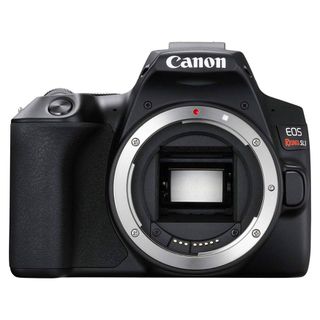
Best for versatility
The Canon EOS Rebel SL3 is a lightweight and remarkably easy-to-use camera that doesn't disappoint when it comes to image quality.
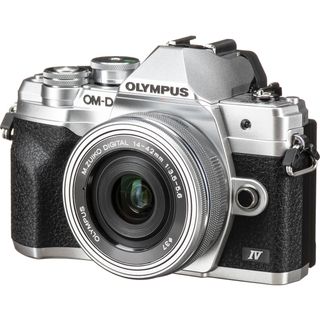
Best Micro Four Thirds camera
The Olympus OM-D E-M10 K IV is an entry-level camera with a stylish design and 4K video capabilities.
Load the next 4 products ↴
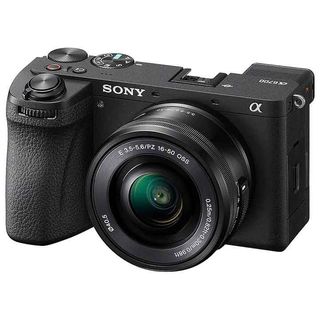
Best for autofocus and tracking
If you're looking for an APS-C camera and have the budget for it, the Sony A6700 is a great option.

Best for simplicity
The Nikon D3500 is the brand’s latest beginner, entry-level DSLR camera, perfectly suited to those wanting to start learning the craft of photography.
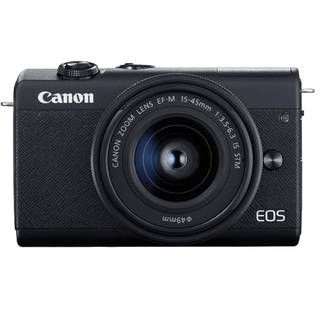
Best for portability
The Canon EOS M200 is a good choice if you’re a novice looking for a compact, affordable camera with a good LCD screen and a helpful navigation menu.

A good option for content creators
The Panasonic Lumix G100 is a compact and lightweight camera that can shoot 4K video and edits images in-camera.
The best beginner cameras we recommend in 2024
Why you can trust Space.com
The best beginner camera overall




Specifications
Reasons to buy
Reasons to avoid
✅ You want a stylish camera: The design is really pleasing.
✅ You want a camera with a touchscreen: This one has a very responsive screen.
✅ You want a sturdy camera: this one has excellent build quality.
❌ You're on a budget: The camera itself isn't cheap, and the extra lenses add on costs.
❌ You want the highest-quality optics: More advanced users will look to upgrade quickly.
🔎 The Nikon Z fc is a beautifully-designed beginner camera with some impressive specs. ★★★★½
Design: The Nikon Z fc is a beautiful camera, and its retro-styled aesthetic will undoubtedly be the first thing you notice. It's designed to look like a camera from years gone by, but inside, you'll find the latest tech. It's a great blend of old and new, heightened by the fact that the camera build itself feels solid in the hand and high-quality.
This mirrorless camera packs a punch despite its lightweight design, consistently producing great results in different shooting conditions. It's user-friendly, making it a joy to take photos with, especially for beginners. It's just a shame that there's no weatherproofing, and the choice of lenses available right now is somewhat limited.
Performance: You can read more details about this camera's performance in our Nikon Z fc review, but the long and short of it is we've been very impressed. Its autofocus is excellent, making shooting moving objects a doddle. And when turning the camera on for the first time, you'll be ready to shoot in less than a second: Perfect for those moments when you don't want to miss something.
Functionality: We liked the touchscreen's responsiveness and were surprised at how quiet the focusing and shutter sound was. Again, it's perfect for discreet/candid photos. The ISO performance was much better than we'd expected for an entry-level model. The Nikon Z Fc perfectly balances functionality and a charming retro appearance.
- Read our full Nikon Z fc review
| Attributes | Notes |
|---|---|
| Design | Good build quality. |
| Performance | Ready to shoot in less than a second. |
| Functionality | Responsive touchscreen. |
Best for content creators


Specifications
Reasons to buy
Reasons to avoid
✅ You're often on the go: This camera is light and compact, perfect for travel.
✅ You want fast autofocus: The autofocus is quick on this camera.
❌ You go on long shoots: The battery life isn't great on this camera.
❌ You want an articulated screen: This one is tilt-only rather than fully articulated — this could be an issue for vloggers.
🔎 For taking everyday snaps, travel photography or even landscape photos, the Fujifilm X-T30 II will see you right for years to come at an affordable price. ★★★★½
Design: One of our favorite things about the Fujifilm X-T30 is its beautiful vintage appearance. It's a seriously stylish camera, but its retro aesthetic shouldn't fool you: on the inside, it's as capable as any modern camera.
It's impressively light and compact, too, which makes the X-T30 perfect for traveling, or simply carrying around in your bag without feeling weighed down. Especially if you want to try your hand at street photography or travel photography, being able to keep a camera on your person to pull out whenever the opportunity strikes is hugely important.
One drawback of this camera is that the screen only tilts rather than being fully articulated. Suppose you frequently use a gimbal or want to do photography that involves shooting low to the ground — the comparable Canon Rebel SL3/250D with its articulating screen might be a better option.
Performance: We were impressed with the overall speed of the camera's operation—it's ready to take pictures in less than a second after starting up, and the focus operates exceptionally quietly.
During our Fujifilm X-T30 II review, we experienced a little 'focus hunting' when we presented the camera with a mixture of shadow and light. When it comes to ISO, it performed slightly better than expected, with values up to ISO 1600 producing no real noticeable noise.
Functionality: We appreciate how user-friendly the X-T30 II is, especially its helpful features for beginners. There are 18 user interface aids and presets for various shooting scenarios, making achieving the desired results easier. You can also adjust things like color depth, white balance, clarity and grain right in the camera, saving a ton of time when editing your photos later on a computer.
We also like how easy it is to transfer images to your smartphone. Simply download the Fujifilm Camera Remote App, and you can connect directly to your camera, transferring images in just two clicks.
- Read our full Fujifilm X-T30 II review
| Attributes | Notes |
|---|---|
| Design | Very light and compact. |
| Performance | Better than expected ISO performance. |
| Functionality | Offers in-camera editing. |
Best for travel




Specifications
Reasons to buy
Reasons to avoid
✅ You're a content creator: There are plenty of options including live-streaming.
✅ You take portraits: There's excellent face tracking and autofocus on this camera.
❌ You want to listen to sound as you record: There is no headphone socket.
❌ You want to shoot 4K: The sensor crops 4K video considerably.
❌ You've got large hands: The buttons on this camera are very close together.
🔎 The Canon EOS M50 Mark II is a great option if you're a content creator looking for a reliable and stylish travel-friendly camera that takes nice detailed photos. ★★★★
Design: Since the release of the first M50, this M50 Mark II has had numerous worthwhile upgrades. They're not all instantly obvious, but the changes made to autofocus and auto-shooting are perhaps the most noticeable, making this camera even better for beginners.
This camera stands out with its eye-catching appearance, especially in white like the one we tested. It's compact and feels a bit delicate, but despite its small size, it's easy to grip and surprisingly comfortable to hold. Even people with larger hands should find it comfortable to use — although the buttons are fairly close together which could become fiddly if you use it a lot.
There's a microphone input for video recording, but oddly, there's no headphone socket to listen back to any footage you've recorded. 4K video recording is achievable but it's heavily cropped. Also, the battery life is quite limited, so this camera might not be ideal for vloggers or aspiring filmmakers. However, if you're focused on still photography and working with a budget, there's plenty to appreciate here.
Performance: Where it matters, the Canon M50 does a fantastic job. Its 24.1MP sensor captures a great amount of detail and creates images that are vibrant and beautifully colored. It's great for outdoor shooting in the daytime and, therefore, the perfect choice for traveling or street photography.
There are a few caveats, however. There's no in-body image stabilization, and so if you want to take photos in low-light conditions or play around with slow shutter speeds, you'll need to use a tripod to avoid blurry shots. The battery life is also not as good as some other cameras on this list: You'll get around 300 shots before needing to charge.
Functionality: In our review of the Canon EOS M50 Mark II, we were quite impressed with its ability to effortlessly track and detect faces when taking photos or videos of people, even when they were moving within the frame.
This camera does have live streaming, which enables you to stream directly to YouTube while using Wi-Fi, and a vertical video mode, which could be a significant time-saving asset if you create social media content.
- Read our full Canon EOS M50 Mark II review
| Attributes | Notes |
|---|---|
| Design | Small and user-friendly. |
| Performance | No image stabilization. |
| Functionality | Impressive face detection and tracking. |
Best mid-range model



Specifications
Reasons to buy
Reasons to avoid
✅ You want a touchscreen: This camera has an excellent tilting screen.
✅ You use autofocus: This camera has a quick autofocus function.
✅ You want all the bells and whistles: This has a good live view and touch shutter release.
❌ You want to shoot video: This camera doesn't have 4K video.
❌ You're on a budget: This camera is on the expensive side.
❌ You want an intuitive camera: This one has a fiddly interface at times.
🔎 The Nikon D5600 has great image quality and is slightly more affordable than some of the newer SLR or mirrorless cameras. ★★★★
Design: One of only a few DSLR cameras still on the market, the Nikon D5600 is a very capable mid-range camera, despite being a little long in the tooth now. You won't find the latest cutting-edge features here — and being a DSLR means it's a little bigger than the mirrorless options on this list — but you will get a very reliable camera that's capable of taking some truly incredible shots.
Given its chunkiness, the Nikon D5600 is comfortable to hold and will fit most hands with ease. Its controls are intuitive and easy to work your way around, too, and the articulating touch-sensitive screen is a great touch. In our Nikon D5600 review, we praised its responsiveness and noted it's even easy to use in bright sunlight.
Performance: The D5600 offers a variety of lens options, but it comes with an AF-P 18-55mm f/3.5-5.6 lens right out of the box, giving you everything you need to get started. While it's not the sharpest or most durable lens available, it still takes excellent images and is quite adaptable for beginners. We loved the camera's ability to produce colorful and beautiful images across various situations.
One thing to note is that the Nikon D5600 doesn't offer 4K video recording, so it may not be the best choice if you want a camera primarily for video.
Functionality: You can pick between shooting in JPEG or RAW formats and control the ISO speed through the menu. The camera also boasts WiFi, Bluetooth, a standard SD card slot and an HDMI slot for connecting to external screens.
One of our favorite features of the Nikon D5600 is its live view mode, where you can press on the screen where you want the camera to focus. This neat and intuitive function makes focusing very accessible to beginners.
- Read our full Nikon D5600 review
| Attributes | Notes |
|---|---|
| Design | Older camera, but still keeps up with newer models. |
| Performance | Outstanding picture quality. |
| Functionality | Features a functional tilting touchscreen. |
Best for versatility



Specifications
Reasons to buy
Reasons to avoid
✅ You want a portable camera: At under 1 lb, this camera is one of the lightest on this list.
✅ You shoot video content: It can shoot 4K and has a great live mode.
❌ You want a mirrorless camera: This is a DSLR.
❌ You want to add different lenses: The APS-C lens lineup is a lot smaller than the full-frame lens lineup.
🔎 The Canon EOS Rebel SL3 is an easy-to-use beginner camera that doesn't disappoint when it comes to image quality. ★★★★
Design: The Canon EOS Rebel SL3 (known as the Canon 250D in the UK), has a sensor and image system largely similar to Canon's EOS M series of mirrorless cameras. It also has an optical viewfinder, which many users prefer over viewing their image on an electronic viewfinder — essentially a small screen in the same housing.
In terms of handling, the camera is easy to use and feels sturdy and chunky while remaining smooth and comfortable to hold. In our Canon EOS Rebel SL3/250D review, we found it to be an excellent option for aspiring photographers and videographers looking for a compact and lightweight camera that you can carry with you wherever you go without taking up too much space.
Performance: While the Canon 250D is more than capable of taking beautiful stills, it's an excellent choice for videography. It can record in 4K and boasts a 'live' mode if you're interested in streaming.
Its ISO range is very impressive given the price bracket of the camera, too. It can shoot between 100 to 25,600 ISO — essentially the camera's sensitivity to light. The higher the ISO, the more light it will let into a shot. High ISO shots can often be noisy, but we were impressed with how well the Canon EOS Rebel SL3/250D performed in this area. It's a valid choice if you want to get into astrophotography and take pictures of the night sky.
Functionality: We love that the SL3/250D comes with a tutorial mode, which walks new users through its settings to set up the perfect shot. It's great for getting to grips with everything the camera offers.
Regarding connectivity, this camera has Bluetooth and Wi-Fi built right in, so you can easily send your photos to your PC or smartphone. Plus, you can edit your images directly on the camera, adding various filters and effects like fish-eye or sepia, to speed up the editing process.
- Read our full Canon EOS Rebel SL3 / 250D review
| Attributes | Notes |
|---|---|
| Design | Sturdy and comfortable to hold. |
| Performance | Quite a straightforward setup. |
| Functionality | Easy transfer to smartphone or tablet. |
Best Micro Four Thirds camera





Specifications
Reasons to buy
Reasons to avoid
✅ You want a stylish camera: The Olympus has a classic attractive design.
✅ You want to take it on the go: It's small and lightweight, perfect for traveling.
❌ You want to film content: This camera doesn't have a built-in microphone, so you'd have to connect a separate one.
❌ You want an articulated screen: This one has a flip-down screen.
🔎 The Olympus OM-D E-M10 Mark IV is a small, lightweight camera that offers a great balance between usability, quality and a beginner-friendly interface. ★★★★
Design: This is a seriously stylish camera. Its retro aesthetic stands out, but although it looks old-fashioned, it's very capable of producing fantastic images. It's a true entry-level camera, and it's a great choice for those who want something small and lightweight. It's easy to slip in and out of a pocket whenever you need it.
As we discovered in our Olympus OM-D E-M10 Mark IV review, this stylish little camera balances impressive quality and usability with a beginner-friendly user interface that beginners will love.
Performance: From turning it on, the Olympus OM-D E-M10 is ready to go in a few seconds. It's not the fastest camera on this list in that regard, but it's perfectly adequate and means you're ready to shoot in just a few blinks.
One of our favorite things about this camera is its screen quality. It's not articulating, but it's beautiful to look at, with very accurate clarity and a sharp resolution.
The 20-megapixel sensor in this camera captures crisp and balanced photos in both RAW and JPEG mode. With 21 scene modes, it adjusts settings for various environments, cutting down on the need for heavy editing afterward. Plus, you can share your files effortlessly using WiFi and Bluetooth, and the camera has image stabilization to keep your shots steady.
Functionality: Although an articulating touch screen on the back would have made it easier to point the camera upwards for astrophotography or when utilizing gimbals for shooting, we love its classic design.
The OM-D-E-M10 Mark IV is an affordable camera with impressive features; it is easy to use and offers superb performance. If you've been taking photos with your smartphone up until now and want to advance your photography skills, we think this is a great step to improve your images.
- Read our full Olympus OM-D E-M10 review
| Attributes | Notes |
|---|---|
| Design | Designed with beginners in mind. |
| Performance | Delivers clear and balanced images. |
| Functionality | We'd like a fully articulating screen. |
Best for autofocus and tracking





Specifications
Reasons to buy
Reasons to avoid
✅ You use autofocus a lot: This camera has advanced AI-based autofocus that doesn't miss a shot.
✅ You shoot at night: It performs very well in low-light environments.
❌ You're on a budget: This camera is on the pricier side, but you do get a lot for your money.
❌ You want a long battery life: Due to the AI autofocus, the battery life has been significantly diminished compared to the A6600.
🔎 The Sony A6700 offers great image quality both in stills and video, and has one of the best autofocus systems around. It's a little on the pricey side, though. ★★★★
Design: The Sony A6700 has a rugged, sturdy design with a large grip that makes it feel very secure in the hand. It's the first camera in Sony's APS-C range to have a fully articulating screen, which makes it much easier to use and much more convenient for shooting selfies or vlogs.
There's also a new dial introduced to the front of the camera compared to the last iteration, the Sony A6600, which makes changing settings a little easier. Now that there are three control dials on the camera body, you can change the aperture, shutter speed and ISO independently without having to switch to a different shooting mode or wade through the menus. This makes manual shooting a lot easier to handle, which may not be something you'd do as a complete beginner, but it does mean you won't outgrow the camera as your skills improve over time.
Performance: The autofocus and tracking are a real highlight of this Sony camera. Using AI for autofocus, the Sony A6700 is incredible at recognizing subjects and maintaining focus on points of interest. In our Sony A6700 review, we tested it on a pair of black cats, notoriously difficult subjects. The camera not only followed their eyes flawlessly but also managed to keep track of them when they turned their heads away.
This camera captures fantastic photos in various situations, even in low light, making it ideal for indoor or nighttime use. However, if you're looking to capture fast-moving action like sports, it's not the fastest camera in terms of its burst rate, so you may want to consider other choices for that.
Functionality: One of the standout features of the A6700 is its in-body image stabilization. It's a very valuable feature that many crop sensor cameras don't have. It basically means that the camera will do extra work to ensure your images are sharp—very helpful when you're shooting at a lower shutter speed or in dimly lit situations. What's even more unusual is that it also works when you're recording video, which is a huge boon.
When it comes to video functionality, the Sony A6700 truly shines. It can shoot up to 4K 120, making it a fantastic choice for videographers. We think this is one of the best cameras for beginners, but it's also one of the most powerful video-shooting cameras currently on the market, so even professionals love it.
If you can afford to splash out, the autofocus, flawless tracking and in-body stabilization may be worth it for you, but it's worth noting that the battery life in this camera isn't as good as many of its competitors. It's the same battery as the Sony A6600 camera (still a valid option, as you can find out in our Sony A6600 review) but thanks to the addition of AI focusing, it doesn't last anywhere near as long on this newer model.
- Read our full Sony A6700 review
| Attributes | Notes |
|---|---|
| Design | Small and lightweight. |
| Performance | Features impressive AI-based autofocus. |
| Functionality | Excels in both photography and videography. |
Best for simplicity




Specifications
Reasons to buy
Reasons to avoid
✅ You're on a budget: This camera offers excellent value for money.
✅ You're a beginner photographer: This camera has a guide mode to help you get to grips with how it all works.
❌ You're a more advanced user: This camera is definitely for beginners.
❌ You want a mirrorless camera: DSLR's are becoming outdated, so opt for a mirrorless if you want the latest tech.
🔎 The Nikon D3500 is a great camera for beginners to start to learn the craft and understand the basics of photography. ★★★½
Design: This camera is perfect for beginners looking to upgrade to more advanced equipment. It's a great entry point into DSLRs: easy to use, yet capable of handling more advanced settings as you become more comfortable with your photography skills over time.
Like most DSLR cameras, it's a little more bulky than the mirrorless cameras on this list, but it's still comfortable to use. Its chunky grip means it's great in most people's hands, and it's still surprisingly lightweight to hold.
Performance: It shouldn't be surprising that, given the age of the Nikon D3500 (it first released in 2018), some of its capabilities are a little outdated now. In our Nikon D3500 review, we noted that its autofocus felt outdated: it only has 11 autofocus points, which is less than even most modern smartphones. It means focusing isn't great, particularly in low-light situations.
That said, for one of the cheapest beginner cameras on the market, the Nikon D3500 still does a grand job of capturing beautiful photographs, particularly in daylight. The great thing about buying a Nikon DSLR - even if they have been largely superseded by mirrorless cameras - is that there's a huge, huge range of compatible lenses, allowing you to grow your collection and broaden your capabilities.
Functionality: Although this camera doesn't have all the fancy features of more expensive models, it's great for people who enjoy photography as a hobby now and then, thanks to its Guide Mode. But if you think you'll want to get better at photography and try out more creative stuff later on, you might be better off with a different camera that offers more room to grow and learn.
We were disappointed by the lack of 4K video, a headphone unit, and WiFi connectivity, and we'd have liked to have seen a more honed autofocus system. But to be honest, worrying too much about these issues is to miss the point of the D3500. Its primary goal is to inspire and spark curiosity about photography, and in that regard, it does an excellent job.
We think that this camera offers outstanding value for the money and is among the most capable entry-level beginner cameras available on the market. Despite its drawbacks, a good included kit lens, quick operation and a compact design are always worthwhile purchases for aspiring photographers.
- Read our full Nikon D3500 review
| Attributes | Notes |
|---|---|
| Design | One of the more lightweight DSLRs. |
| Performance | Not the best for low light photography. |
| Functionality | No 4K video, headphone jack or WiFi. |
Best for portability



Specifications
Reasons to buy
Reasons to avoid
✅ You want a camera with a good screen: It has a very responsive LCD touchscreen.
✅ You need help navigating your camera: The M200 has useful guided menus.
❌ You shoot video content: This camera has no microphone input.
❌ You want to shoot 4K video: This one crops 4K video.
🔎The Canon EOS M200 is ideal for smartphone users who want to advance their photography skills, but the image quality could be more exciting. ★★★½
Design: The super compact nature of the Canon EOS M200 means it's likely to appeal most to smartphone users who are wanting to take the next step in their photography journey. This camera is so small that it can fit in a pocket, so you don't need to worry about lugging around a heavy equipment bag just to take a photograph.
One of our favorite aspects of the M200's design is its tilt-and-flip touchscreen. It's very responsive, and its range of movements comes in very handy when recording video or capturing shots at creative angles. You'll also use the screen to change almost all of the camera's settings, so its high responsiveness is a huge plus.
The downside is, however, that the M200 doesn't have a viewfinder. You'll need to compose all your shots using the screen. If you're used to shooting on a smartphone, though, it shouldn't be too much of a problem.
Performance: In our Canon EOS M200 review, we found the camera's shutter speed to be a little sluggish, so it's perhaps not the best choice if you want to shoot fast-moving subjects. That said, it has excellent autofocus and eye detection, making it a fantastic choice for portraits, among other types of shooting. Its images feature rich colors, and it's good at capturing detail.
This camera has a pretty good battery life, so it'll stay powered up for a long day without needing an extra battery. However, it's not the best for astrophotography or low-light conditions because it doesn't handle noise very well.
Functionality: This camera's Auto mode is perfect for beginners because it picks all the right settings for you, making it super easy to use. Despite its compact size, we were happy to see a pop-up flash that worked great for taking group photos at night. Vloggers might feel a bit restricted by the absence of an external microphone input, but the WiFi and Bluetooth features make it simple to share and transfer files to other devices or online platforms.
People who want to be able to point and shoot will enjoy the straightforward nature of this camera, and its neat size makes it easy to take on trips, but more experienced photographers may need something more advanced.
- Read our full Canon EOS M200 review
| Attributes | Notes |
|---|---|
| Design | Designed for smartphone users looking for a step up. |
| Performance | Good detail, but loss of sharpness towards the edge of the frame. |
| Functionality | Responsive LCD touchscreen. |
A good option for content creators
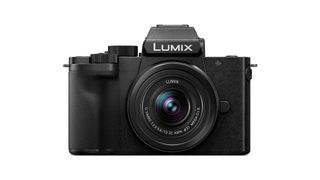
Panasonic Lumix G100
Our expert review:
Specifications
Reasons to buy
Reasons to avoid
✅ You want to take your camera on the go: It comes in a small package suitable for travel.
✅ You want to edit on the go: RAW images are editable in-camera.
✅ You want a choice of lenses: It has a good lineup of compatible lenses.
❌ You want to shoot long-format video: This camera has a 10-minute limit in 4K.
❌ You want good autofocus: It's not always reliable on this camera.
🔎 The Panasonic Lumix G100 is a lightweight camera that's great for vloggers and content creation. ★★★
Design: This camera looks fantastic, and it's super small and light, perfect for fitting into your pocket. It weighs just 412g in fact, so you'll barely notice it in your pocket or bag. Despite its small size, it has a large grip on the side, which makes it comfortable to hold.
Its screen flips out, which is a welcome touch — particularly if you're using the Lumix G100 for creating video content.
Performance: Just like all Lumix cameras from Panasonic, it uses a micro four-thirds system, which means it has a sensor even smaller than those in APS-C cameras. These smaller sensors are designed to keep cameras as compact as possible, and the G100 is a great example of that.
Despite the sensor size, though, the G100 is more than capable of taking great photos and thanks to an available range of lenses, this is a camera that will be able to grow alongside you. The only complaint is that the autofocus isn't the most reliable: If you're hoping to shoot in dimly-lit situations, we'd recommend opting for a camera with a larger sensor and better autofocus features.
Functionality: This camera is clearly targeted at vloggers and videographers, and it simplifies content creation with features like directional tracked audio, face detection, selfie shooting mode and hybrid 5-stop image stabilization. However, it only supports 4K recording for a maximum of 10 minutes at a time, which could be a deal-breaker if you want to shoot longer videos.
Like many beginner cameras, in-camera editing and filters minimize workflow and allow you to share your content in next to no time.
| Attributes | Notes |
|---|---|
| Design | Small and compact, ideal for traveling. |
| Performance | Autofocus isn't always reliable. |
| Functionality | Maximum 10 minute 4K recording limit. |
Best beginner cameras FAQs
Which is the best beginner camera?
The Nikon Z fc is our top pick of the best beginner camera due to its affordable price tag, stylish design, and responsive interface. Coming in at number two is the Fujifilm X-T30 II, which has more in-body customization and a simple file transfer option - ideal if you're a content creator.
Choosing the right camera for you is essential, even if you're a beginner. You'll need to have the right piece of equipment to learn about photography and develop your style. The wrong camera may mean you get frustrated and lose interest in the hobby instead of honing your craft.
A good place to start when choosing the perfect camera for you is the type of photography you want to focus on. Some models have features like 4K video and face detection that make them great for vlogging and content creation. If you're going to be doing mostly stills photography, you may want to go for a model with image stabilization and a fast autofocus. Other cameras still are best for those who want to do minimal editing, or those who like to shoot on the go.
What is the best beginner camera for videography?
Whether you're a full-time content creator or you're just starting out posting videos online, you can find a beginner camera perfectly suited for YouTube and TikTok.
We'd recommend the Sony A6600 if you need great autofocus and tracking features while also retaining compactness and portability. If you're on a budget and aren't fussed whether you buy a mirrorless or DSLR as long as you can still shoot 4K video, take a look at the Canon EOS Rebel SL3 / 250D.
What is the best beginner camera for landscapes?
If you're after the purest image detail, then opt for the Fujifilm X-T30 II as it has the highest stills image resolution on this list (26MP). But if high resolution isn't the first port of call the Olympus OM-D E-M10 Mark IV Micro-Four-Thirds camera is a strong contender because of its compact and portable body.
There's no one-size-fits-all when it comes to beginner cameras and while some models are great for landscape photography, they'll also be equally adept in other fields such as portraiture, astrophotography, wildlife and more.
How much does a beginner camera cost?
We'd say between $600 to $1300 is a reasonable price to pay for a beginner camera. Beginner digital cameras are often relatively cheap because new photographers might not yet know whether they're going to commit to the discipline full-time, and some may just want an upgrade from their smartphone or tablet in terms of image quality.
That said, you can also get beginner cameras with complex features and tools. Beginners who want to progress should look for a camera that has the ability to shoot in RAW file format, as that collects more editable data, and has a full manual mode to control aperture, shutter speed and ISO sensitivity.
How we tested the best beginner cameras
To guarantee you're getting honest, up-to-date recommendations on the best cameras to buy here at Space.com we make sure to put every camera through a rigorous review to fully test each product. Each camera is reviewed based on a multitude of aspects, from its construction and design, to how well it functions as an optical instrument and its performance in the field.
- The best time to buy a camera: shop smart and save
- Should you buy a DSLR camera?
- Best mirrorless cameras
- Best cameras for low-light photography
- Best cameras for astrophotography
- 5 ways to save money when buying astrophotography equipment
Each camera is carefully tested by either our expert staff or knowledgeable freelance contributors who know their subject areas in depth. This ensures fair reviewing is backed by personal, hands-on experience with each camera and is judged based on its price point, class and destined use. For example, comparing a 60MP full-frame mirrorless camera to a sleek little crop-sensor DSLR wouldn’t be appropriate, though each camera might be the best-performing product in its own class.
We examine how easy each camera is to operate, whether it contains the latest up-to-date imaging technology, whether the cameras can shoot high-quality stills photos and high-resolution video and also make suggestions if a particular camera would benefit from any additional kit to give you the best viewing experience possible.
With complete editorial independence, Space.com are here to ensure you get the best buying advice on cameras, whether you should purchase an instrument or not, making our buying guides and reviews reliable and transparent.
Join our Space Forums to keep talking space on the latest missions, night sky and more! And if you have a news tip, correction or comment, let us know at: community@space.com.
Get the Space.com Newsletter
Breaking space news, the latest updates on rocket launches, skywatching events and more!
Jacob Little is a photographer, writer and communications professional based in Bristol and Cornwall. His main inspirations come from outdoor adventure, travel, rural living and wild ways and crafts. Passionate about weaving the core principles of storytelling into his images, he approaches brand and copywriting work in much the same way. Conveying a compelling narrative is one of the main drivers behind much of his work.
- Kimberley LaneContributing writer
- Tantse WalterContributing Writer
- Kimberley SnaithFreelance contributor
